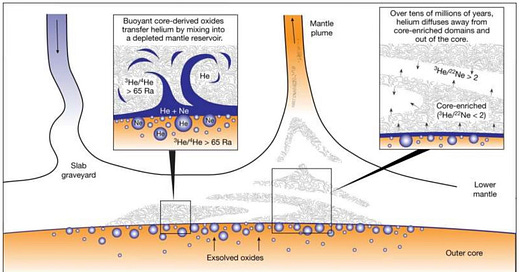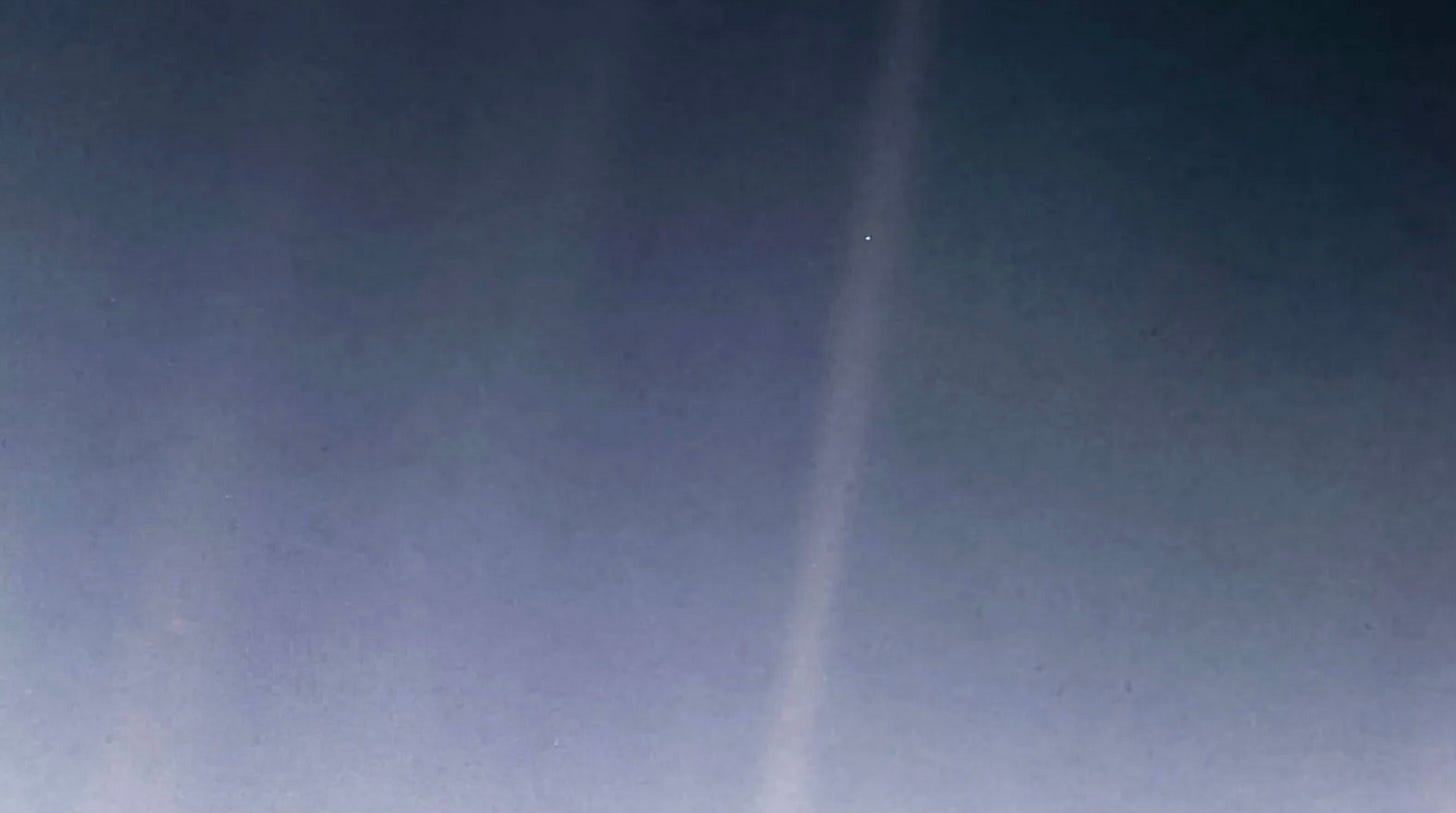This week we investigate a potential leak in the Earth’s Core. We discover a faster way to crate holograms and a new antenna that is more efficient than current technology. Finally we will revisit Carl Sagan’s question “if we were an alien civilization, looking at earth from millions of miles away, how would we know if there is life on earth?” The answer changed the way that we investigate planets that might host life in other galaxies.
Is the Earth’s Core Leaking?
A team from the California Institute of Technology and Woods Hole Oceanographic Institution have found evidence of high levels of helium-3 on Baffin Island. Baffin Island is a territory of Canada, located north of Quebec and the Hudson Straight. It is the 5th biggest island in the world.
Helium-3 is an ancient isotope which was prevalent during the time that the earth was forming. That is when it was trapped in the core. Any helium-3 on the surface quickly escapes into the atmosphere and into space (as it is so light). Helium-3 is thus very rare on the surface of the earth. It is theorized that any that is found on the surface has found its’ way out of the core.
The team were testing multiple lava flows on Baffin Island and found much higher levels of Helium-3 than in previous observations elsewhere. The ratio of Helium-3 to Helium-4 (a much more common isotope) was the highest that had ever been measured in a terrestrial rock.
If the core is leaking then the materials around the Helium-3 should also have leaked from the core. This may be a chance to discover more about the core of the earth than we had thought possible.
Faster Holograms
Holograms are an immersive 3D experience however they are very (and I mean very) computationally intensive. This limits applications. A team from Chiba University near Tokyo have developed a new deep learning technique that solves this computational problem.
The technique can even use conventional 2D images as the input for generating the hologram. Currently specialized and expensive 3D cameras are required for the development of holograms. This limits their application and use.
The approach uses three deep neural networks to transform the 2D image. The first makes use of a color image from a regular camera and then predicts the associated depth map of the object in the image. This predicts the 3D structure of the object. The second network then combines the original image and the depth map to create a hologram. The third network then refines the hologram and makes it suitable for display on different devices.
The time taken by this system to process the data and generate a hologram on a normal PC is less than current state of the art graphics processing units. Potential applications include heads up displays in cars. In a previous newsletter we spoke about 7G communication networks being required for the transmission of holographic images due to the computational intensity involved. This new approach may change that.
A New Radio Wave Antenna
A team at the University of Otago have used a small glass bulb containing an atomic vapor to demonstrate a new form of antenna for radio waves. The atoms in the vapor are in a Rydberg state. They are highly sensitive, have broad tune ability and a small size making them portable.
A single receiver could cover the entire spectrum of radio frequencies removing the need to have different antennas for different frequency bands. They are super sensitive and accurate to a wide range of signals. There are no metal parts (which can scatter signals) and the sensor is accessed via laser light eliminating the need for electric cables.
This new system could simplify communications on the battlefield for soldiers. There are also potential uses in satellite technology.
If we were an Alien Civilization, how would we know if there was life on Earth?
What are the signals that we should look for to determine if there is life on any planet that we might discover? What would an alien see if they were looking at Earth? What signals would tell them that there is life here? I am not talking about the sort of aliens that buzz rural farms in Alabama in their saucer shaped spaceships but aliens that sit on their home planet and look at stars distant from them and wonder “is there life anywhere else in the universe?”
30 years ago Carl Sagan convinced NASA to turn the Galileo spacecraft around and look at earth as Galileo flew past Jupiter. Galileo was launched in 1989 to explore Jupiter. The spacecraft was launched in an orbiting shuttle which sent the spacecraft towards Venus. The gravitation energy of Venus was then used to fling the craft back past Earth towards Jupiter. On December 8, 1990 Galileo flew 960 kilometers above the surface of earth. We know that life exists on Earth. Carl Sagan asked “what would Galileo see that would confirm the existence of that life?”
The spacecraft took two high resolution images of Earth which happened to be of Australia and Antarctica. Those two photos did not reveal any signs of civilization (we are after all living on a big brown land and there is a lot of nothing in the middle). Galileo measured oxygen and methane in the earth’s atmosphere. The ratio of these gases suggested living organisms. A steep cliff in the infrared spectrum of sunlight reflecting from the surface suggested vegetation. Radio transmissions were also picked up from the surface that were moderated as if they were engineered. These signals suggested some form of life.
We knew the answer to the question is there life on earth however the process of trying to determine the answer led us to change the way that searched for life in the rest of the universe. In 1990 we did not know of any other planets in the universe outside of the planets in the solar system. We now know of more than 5,500. Most are vastly different to Earth. The results of the observations from Galileo allowed Sagan and his colleagues to develop a scientific framework for looking for signs of life on other planets.
The James Webb Telescope is now starting its’ investigation of known exoplanets. We have discovered methane in the atmosphere of at least one planet. The methane might be from life or an active volcano (no life required for a volcano but certainly possible). In the past month (September 2023) astronomers have found methane and carbon dioxide in the atmosphere of a large exoplanet. This might indicate oceans of water. They also found hints of dimethyl sulfide which come from phytoplankton on earth. None of this is confirmed, it is all a big maybe.
It is unlikely that we will spot life on another planet going about its’ business, living from day to day via looking through a telescope. We will find signals or clues that could be caused by a variety of circumstances. Each piece of evidence needs to be examined and considered. It will take us years of consideration and debate to agree that we have actually found life elsewhere in the universe.
Later that year Sagan convinced NASA to once again turn Galileo around as it passed Neptune and take a photo of earth. That photo was the famous Pale Blue Dot photograph. As Carl Sagan said “That’s here. That’s home. That’s us.”
Paying it Forward
If you have a start-up or know of a start-up that has a product ready for market please let me know. I would be happy to have a look and feature the startup in this newsletter. Also if any startups need introductions please get in touch and I will help where I can.
If you have any questions or comments please comment below.
I would also appreciate it if you could forward this newsletter to anyone that you think might be interested.
Till next week.








Fascinating edition of your newsletter.
R2D2's hologram might work better then.